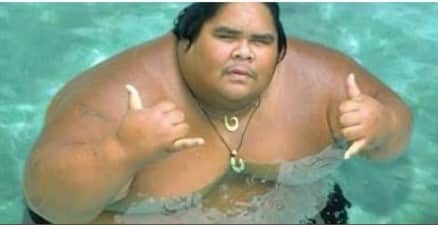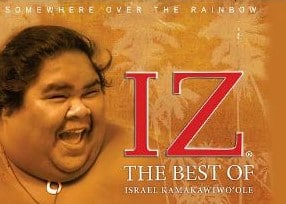
BY MICHAEL BIRD
TALLASSEE, ALABAMA
You can listen to the song referenced here on Youtube at https://www.youtube.com/watch?v=V1bFr2SWP1I
Occasionally, the power of a song reveals itself in the way it is presented. And sometimes, an artist can redefine a song, even a classic, and make it something completely new.
And every so often, a song becomes part of the culture at just the right time. That’s what happened with an acoustic ukulele medley of “Over the Rainbow” and “What a Wonderful World,” performed by the late Hawaiian musician Israel Kamakawiwo’ole (Kah-MAH-kah-VEE-voh-OH-lay), which reached #12 on the Billboard charts in late 2003 and early 2004, just as the world was entering some of the most difficult days of the wars in Iraq and Afghanistan.
While Judy Garland and Louis Armstrong performed the original classic songs, music publisher EMI says that the Israel Kamakawiwo’ole mash-up has now become so definitive that it is the most requested arrangement. In fact, many listeners today have become so accustomed to hearing these tunes set to ukulele accompaniment, they may not realize that Dorothy once sang hers in “The Wizard of Oz” back in 1939 or Satchmo took his to the top of the charts in 1968.
It all came about with a spur-of-the-moment recording session way back in 1988. Israel called his recording studio at 3:00 in the morning, and his producer met him there 15 minutes later. Milan Bertosa, the engineer, remembered later, “I put up some microphones, do a quick sound check, roll tape, and the first thing he does is ‘Somewhere Over the Rainbow.’ He played and sang, one take, and it was over.”
One take.
The song was originally released as a bonus track on one of Israel’s albums in 1993. Film director and writer Martin Brest became a huge fan; Brest, known for “Going in Style,” “Scent of a Woman,” and “Beverly Hills Cop,” wanted to use this version in his film “Meet Joe Black.” Next, it was featured in a TV commercial for eToys.com. From those first instances in 2001, the song has been used in at least nine other motion pictures (“50 First Dates” being a leading example) and at least that many television shows (including the finale of “ER”). It has even figured into books written by super fan Dean Koontz, and in the early 2000s, was featured on the opening screen for America Online (AOL).
This song traveled a much different path than the traditional routes of musical success; similarly, its performer did the same.
Israel was born in 1959, before Hawaii became a state, on the island of Ni’ihau. His mother managed a club on the island, and his father was the bouncer. Israel grew up hearing music and musicians, and as early as age 10, he was joining artists on stage and playing his ukulele with them.
As a teenager, the family moved to Oahu. At first, Israel resisted the move, but a chance meeting on a beach with another student who was skipping school – John Koko – led to the formation of a rock band called the Makaha Sons, and they recorded 21 albums together during the 1980s.
The Makaha Sons made a point to break away from the hula tunes favored by tourists, such as “My Little Grass Shack,” and moved into writing their own material as well as re-imagining earlier works by other artists.
In 1993, Israel decided he wanted to make a solo record. That LP, “Facing Future,” would eventually become the most successful Hawaiian music album in the world. The RIAA (Record Industry Association of America) awarded it Gold status in 2002, then was certified Platinum in 2005 for sales of over one million units.
Israel sure didn’t fit the profile of our modern idea of celebrity. He was six feet tall with long black hair, and he weighed nearly 700 pounds.
His brother died from complications of obesity, and so had almost all of Israel’s immediate family. And though he was one of the most beloved singers in Hawaiian music history, the rest of the world barely knew him until this one song began to see some success.
And then, just as his career seemed to be reaching its peak, Israel died of respiratory failure at the age of 38.
“I’m not scared for myself for dying,” Israel once stated. “Because I believe all these places are temporary. This is just one shell. Because we Hawaiians live in both worlds. It’s in our veins. When our time comes, don’t cry for me. Plant a tree.”
That sentiment shines through his beautifully understated medley of “Somewhere Over the Rainbow/What a Wonderful World.” And like it always does, a song appears just when our mean old world needs it the most.
Michael Bird has been a music teacher for 26 years, most of that time for Tallassee City Schools in Elmore County. He is also a night manager for Tallassee Super Foods, a columnist for the Tallassee Tribune, and a radio host on 580 WACQ & FM 98.5. Mr. Bird is married to professional musician Sena Thibodeaux Bird and they have seven children ranging in age from 25 to 8.







